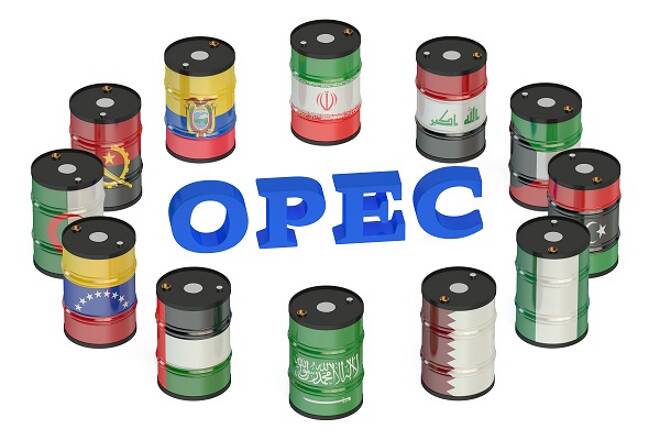Advertisement
Advertisement
Oil Price Fundamental Weekly Forecast – Disappointment from OPEC+ Could Trim $5.00 Off the Top
By:
OPEC and its allies are leaning toward delaying next year’s planned increase in oil output but this news has already been priced into the market.
U.S. West Texas Intermediate and international-benchmark Brent crude oil futures posted a fourth straight gain the week-ending November 27 ahead of an OPEC+ meeting early this week.
Last week, January WTI crude oil settled at $45.74, up $3.32 or +7.83% and February Brent crude oil finished at $48.25, up $3.18 or +6.59%.
Encouraging news on potential COVID-19 vaccines from AstraZeneca and other were the primary drivers of the rally last week although questions were raised over AstraZeneca’s “vaccine for the world,” with several scientists sounding caution over the trial results.
“While a successful vaccine rollout should break the link between infection and mobility, even then global oil demand will likely reach its pre-pandemic run rate by mid-2022,” JP Morgan said.
OPEC+ Output Decision
OPEC+ was planning to raise output by 2 million barrels per day (bpd) in January – about 2% of global consumption – after record supply cuts this year. OPEC+ ministers are due to meet from Monday.
The Libyan Output Problem
Rising Libyan output is also contributing to concerns about oversupply in the market. The OPEC member, which is exempt from the oil cuts, has added more than 1.1 million bpd of output since early September.
US Crude Stockpiles Fall Unexpectedly, Gasoline Builds: EIA
U.S. crude oil inventories fell last week, as well as distillate stocks, while gasoline stockpiles rose sharply, the U.S. Energy Information Administration (EIA) said on Wednesday.
Crude inventories fell by 754,000 barrels in the week to November 20 to 488.7 million barrels, compared with analysts’ expectations in a Reuters poll for a 127,000-barrel rise.
Gasoline stocks rose by 2.2 million barrels in the week to 230.2 million barrels, the EIA said, more than forecasts for a 614,000-barrel rise.
Distillate stockpiles, which include diesel and heating oil, fell by 1.4 million barrels in the week to 142.6 million barrels, close to expectations for a 1.6 million-barrel drop, data showed.
Weekly Forecast
On the bullish side, OPEC and its allies are leaning toward delaying next year’s planned increase in oil output but this news has already been priced into the market as the story has been floated for about a month.
Meanwhile, Libyan output continues to rise, contributing to concerns about oversupply in the market as many people are ignoring lockdown advice and travelling.
COVID-19 cases are expected to rise sharply over the next few weeks, in my opinion, as nearly 6 million Americans took air trips from Friday to Wednesday in advance of the Thanksgiving break as they ignored advice from the Centers for Disease Control to stay home, the U.S. Transportation Security Administration said. This doesn’t bode well for gasoline demand as it is expected to slip in the coming weeks due to increased coronavirus infections.
The January WTI Fibonacci level at $46.43 is both resistance and a potential trigger point for an acceleration to the upside. The decision by OPEC+ will determine how traders react to this level.
If OPEC+ decides to delay until after April 1 then prices could soar. If OPEC and its allies choose April 1 or a shorter date then prices could break into support at $42.57. Some analysts are saying that if OPEC+ disappoints, prices could plunge as much as $5.00 per barrel.
Keep in mind that another surge in COVID-19 cases or problems with a vaccine is likely to outweigh any bullish news from OPEC+.
For a look at all of today’s economic events, check out our economic calendar.
About the Author
James Hyerczykauthor
James is a Florida-based technical analyst, market researcher, educator and trader with 35+ years of experience. He is an expert in the area of patterns, price and time analysis as it applies to futures, Forex, and stocks.
Did you find this article useful?
Latest news and analysis
Advertisement
